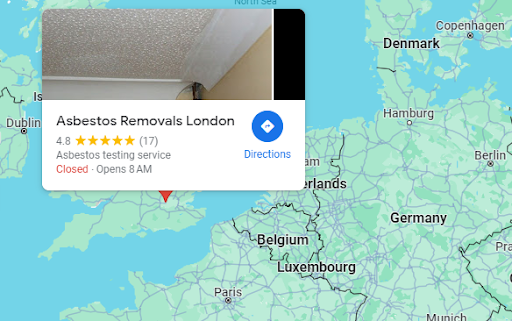Asbestos was widely used as an insulating and fireproofing material in buildings constructed before 2000 in the UK. There are three main types – white, brown, and blue asbestos. Asbestos exposure through inhaling fibres can cause serious diseases like mesothelioma and lung cancer, so knowing how to identify asbestos is critical, especially during renovations or demolitions. With London’s 32 boroughs containing a mix of older and newer buildings, asbestos awareness is vital in 2024.
Looking for Asbestos
You often cannot see asbestos just by visual inspection, but there are signs during renovations that indicate you should test for it. These include insulation around heating pipes, old vinyl floor tiles, textured coatings like Artex, cement roof sheets, and other pre-2000 building materials. Asbestos requires analysis under a microscope to confirm, so if asbestos is suspected, licensed surveyors can take small samples to lab test.
Asbestos Types and Risks
The three asbestos types have different fibre sizes and shapes, posing varying health risks. Blue and brown asbestos fibres are more dangerous as they can easily become airborne and lodge in lungs when inhaled. White asbestos has larger fibres so there is less risk unless materials containing it are disturbed. Regardless, asbestos becomes a hazard when damaged or decaying, allowing fibres to spread. This makes demolitions, renovations, or construction works especially high-risk for asbestos exposure if not properly handled.
Importance of Licensed Asbestos Removal
UK law requires following strict asbestos removal procedures, so using licensed asbestos removal companies in London’s boroughs is critical whenever:
– Buildings are demolished or refurbished
– Materials containing asbestos are damaged
– Asbestos needs disposal after being identified
Licensed companies have asbestos removal trained specialists. They will first survey to identify asbestos, then safely contain work areas to limit fibre release using sealed rooms, gloves, suits and masks. Asbestos materials get double-bagged and disposed of at registered sites. Air monitoring also checks asbestos fibre levels. Following asbestos removal procedures reduces overall project health risks significantly.
Asbestos Removal Regulations
The main asbestos removal regulation in the UK is the Control of Asbestos Regulations 2012. This requires:
– Asbestos surveying before renovations
– Licensed contractors for most asbestos removal
– Medical surveillance for asbestos workers
– Special waste disposal procedures
Projects meeting criteria like exceeding licensed contractor scope of work or asbestos exceeding a total volume threshold require notifying the UK Health and Safety Executive (HSE). So using licensed companies experienced with these regulations in London’s boroughs helps ensure regulatory compliance.
Essential for Construction Industry
Construction companies carrying out demolitions, refurbishments or renovations in London’s boroughs need asbestos checks completed first. Without proper surveys, asbestos can unexpectedly be discovered mid-project, requiring emergency removal and exposing workers and occupants to potential fibres. This may halt work completely, with costly delays.
Architecture and project management firms also owe duty of care to identify asbestos before signing off on any designs disturbing building fabrics. Property developers, landlords and those managing large housing stocks should similarly ensure asbestos management plans and removal where needed. Overall in 2024, asbestos remains a priority for London’s property and development industry.
Peace of Mind for Homeowners
Even homeowners renovating or disturbing potential asbestos-containing materials can risk legal penalties and prosecutions if not using registered specialists. Residents should never attempt DIY asbestos removal. So for anyone modernising an older London home in 2024, checking for asbestos and hiring licensed contractors provides assurance their project complies with regulations. This also minimises health risks for householders from exposure.
London’s boroughs contain diverse and aging building stocks, meaning asbestos likely still exists in places. Knowing what to look for and using expert help ensures asbestos gets handled safely in 2024. With construction and property development booming despite COVID recovery, asbestos removal demand will keep rising across London. Following proper identification and licensed contractor procedures is essential for preventing exposure. Taking these asbestos precautions protects workers, residents, and the wider public when disturbing legacy materials containing this hazardous fibre.

Asbestos Removals London UK0
2080880271
https://www.asbestosremovalsinlondon.co.uk/
Media Contact
Company Name: Asbestos Removals London UK
Contact Person: Media Relations
Email: Send Email
City: London
Country: United Kingdom
Website: https://www.asbestosremovalsinlondon.co.uk/
